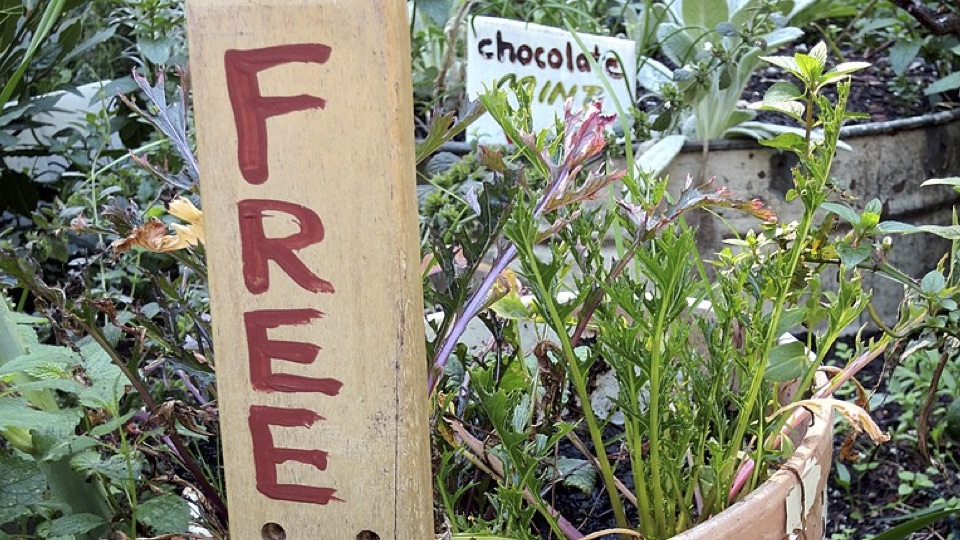Food insecurities (food intake or eating patterns disrupted due to lack of money or other resources) and food deserts (areas/neighborhoods with limited access to places providing nutritious foods) are a growing concern. In fact, it’s a crisis bordering on beyond alarming. A sky-rocketing unemployment rate has sent American citizens rushing to already straining food pantries and families living in fear.
One remedy, at least in part, may be community gardens. There are three types of gardens:
- Allotment gardens, also described as community gardens, offer individual plots to community members for growing and harvesting produce for themselves and their families.
- Demonstration gardens are educational gardens that host instructions on healthy living, gardening practices, and plant science. Produce is generally donated to food pantries or cooking classes.
- Sharing gardens, a/k/a food pantry gardens, operate on the principle that those who use them will help maintain them.
To locate the nearest community garden in your area and gather more information, visit American Community Gardening Association.
Benefits
Community gardens make up part of the sharing economy. They beautify cities by utilizing the once vacant lots that were eyesores. The fresh fruits and vegetables are a welcome to food deserts, promoting a healthier lifestyle. Community gardens absorb rainwater which would otherwise runoff through the streets, carrying pollutants into lakes and rivers.
The plants add oxygen to the air. The project helps build stronger communities, creating community spirit and the joy and pride of investing in something worthwhile. Community gardens are educational for adults and children in that they teach basic agricultural lessons, introduce environmental issues, work skills, and business principles.
Starting Your Own Community Garden
Begin by having a discussion with neighbors to see if they’re interested, or if you own a piece of land and live in an area not surrounded by closely populated neighbors, you may even consider reaching out to a group of friends or locals who are interested in membership and don’t mind driving a mile or two to the garden.
Include talks with groups like gardening societies and homeowners’ and tenants’ associations, if necessary. Discuss what type of garden best suits your community’s needs. Is an organic garden preferred or do they desire separate plots for each person to tend or a single space where everyone can manage?
Tips for picking out a designated site:
- You want a space that is not being used and is rich in soil
- The planting area is relatively flat and receives at least six hours of sunshine
- Source of water is available
Planning, Membership, and Rule Establishments
Having a successful garden requires more than throwing out a bunch of seeds. Other decisions must be made besides the aforementioned beginner’s guidelines. Will there be compost bins, a shed for storing tools or a common area (preferably shaded) with benches to sort and pack up that glorious bounty?
Enforcing annual membership fees is recommended in order to pay for any ongoing costs. You could also try finding sponsors or hold fundraisers such as rummage or bake sales.
As with anything, setting rules is a must. It would be a good idea to set up a bank account for your garden funds. Decide on who is responsible for what. Who collects the dues? How are the monies being used? What are the garden hours of operation? Who will be responsible for the maintenance (i.e., weeding, mowing, etc.)?
Grants
Here comes the good part. Funding. There are actually grants available to help with community garden projects. However, the application process can be complex and take as long as six months or more, but that does give you plenty of time to plan, research, and organize.
Community Gardens and COVID-19
With all that said, there is the matter of COVID-19 precautions. Living in the midst of a pandemic can certainly place a damper on things and raise cause for concern. Nevertheless, there are practices that can be set in place and help keep community gardens thriving. Maintain hygiene and sanitation habits. The size of groups should be limited. Volunteers can bring their own tools instead of sharing and of course, never go if feeling sick.
-Sharon Oliver
Photo: Ruth Hartnup from Vancouver, Canada (Wikimedia Commons)


0 comments on “Back to Eden: The Benefits of Community Gardens”